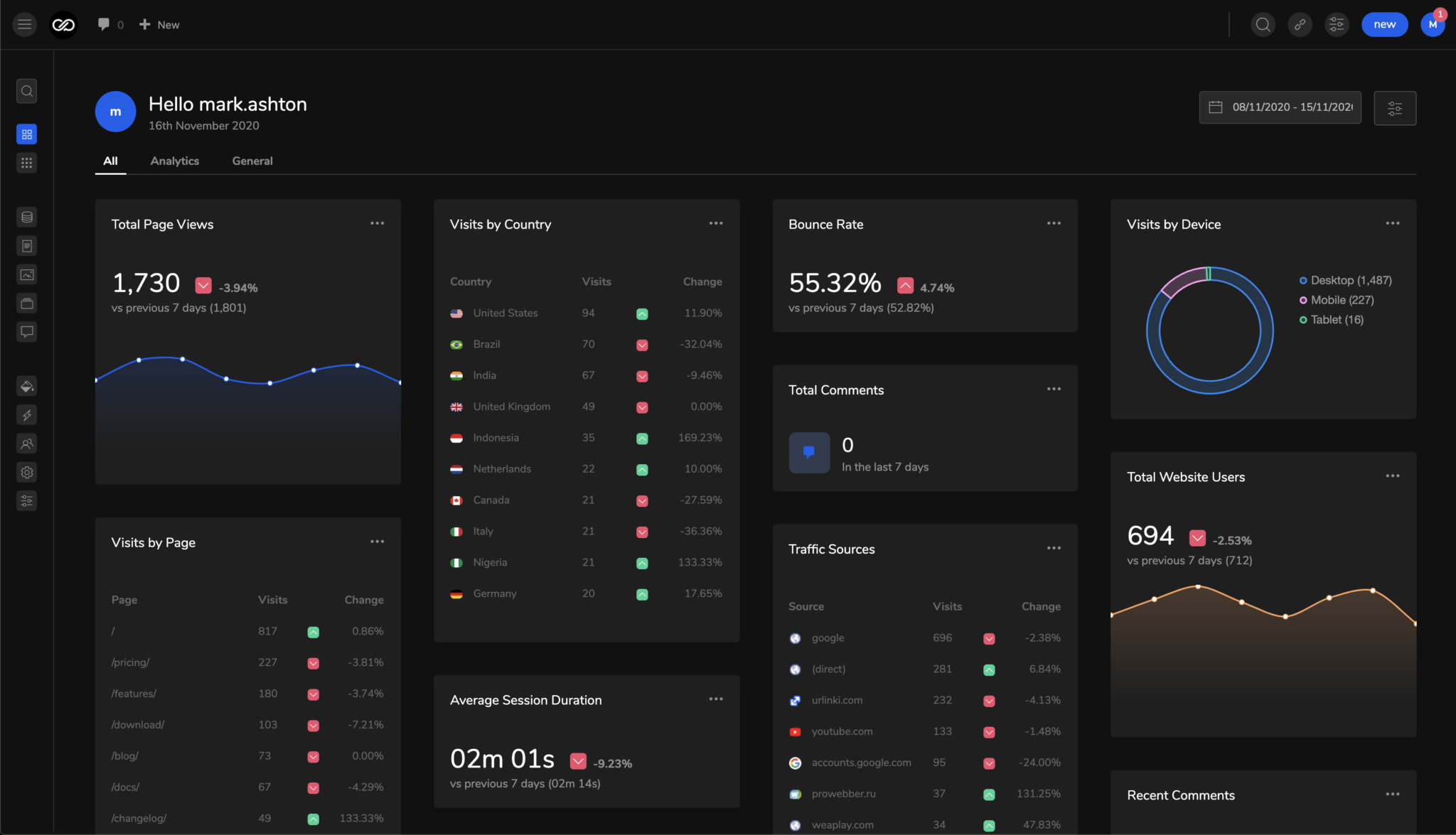
Six months ago, Admin 2020 captured the attention of WordPress users with its fresh approach to skinning the admin screens. Version 2 of the plugin has been completely rewritten to support a modular architecture so users can enable or disable features, or selectively enable them by user role or username. Some users prefer the default menu but want to be able to categorize their media into folders with the plugin’s CMS-friendly architecture for organizing media and posts. This update significantly improves performance for those who don’t require the analytics, admin bar, menu, or other features.
The plugin now has a new settings interface that is less cluttered than the previous version.

“Admin 2020 started off as a WordPress admin theme, and that was always at the core of the plugin,” developer Mark Ashton said. “As we grew, we added more and more features on top of that and it became very difficult in its current iteration to separate those feature sets, or disable some features and let others carry on.”
Version 2 also greatly improves compatibility with other plugins. Ashton was spending a lot of time adding support for other plugins, which slowed down development. The new approach to compatibility causes fewer styling conflicts and works without having to add custom stylesheets for other plugins. Prior to this version, Admin 2020 disabled 90% of WordPress admin styling and applied its own.
“While this gave us complete control over layouts and styling, it was one of the reasons we had to spend a lot of time adding support for other plugins,” Ashton said. “So for version 2, we kept the WP styling (most of it anyway) and applied a lightweight theme on top of it. The end result is a theme that is more refined, quicker, and the most compatible we have ever put out.
Usually the only plugins we have problems with these days are the ones that actively disable non standard WP scripts and styles, which obviously breaks admin 2020’s layout.”
In the interest of keeping Admin 2020 lightweight, the plugin now uses a custom build of the UIkit framework that is more tailored to its specific use case.
“Instead of having uikit as a base, and then layering on top of it, we just tailored it to suit the plugin needs and thanks to the wonders of scss it is an incredibly easy framework to modify,” Ashton said. “Doing this also allowed us to support RTL much easier which was a very common feature request.”
New Admin 2020 Lite Version Offers Basic Features, Coming to WordPress.org in 2021
Admin 2020 is now available on the plugin’s website in a Lite version for free. In recognition of WordPress.org’s undeniable force as a distribution channel, Ashton is considering changing his previous strategy of pursuing a fully commercial model to embrace the idea of marketing a free plugin with a paid upgrade.
“Admin 2020 has grown so much since we launched in May this year and it’s no longer just an admin theme,” Ashton said. “In fact, we see it as more of an admin extension now that also has a theme. Because of this, we felt there are now enough features to be able to offer the lite and pro versions.”
With the new modular system in version 2, the free and commercial versions are the same plugins, except the lite version has the paid modules removed.
“This means the development of the two versions is synched and updates, new features and bug fixes all rollout at the same time,” Ashton said. “For the time being we are going to stick to our own distribution channel just to keep everything streamlined, but releasing through wordpress.org is something we have planned for next year.”
Launching a new business during a pandemic is no easy feat but Ashton has grown Admin 2020’s user base to 3,642 active installations and is still looking to hire someone to assist in developing and maintaining the plugin.
“This has grown dramatically since the release of version 2 and will likely be around 5,000 or more in a week due to the sales from the Black Friday/Cyber Monday event,” he said.
Next up on the roadmap, Admin 2020 users can expect more customization options and deeper integration with WooCommerce. Ashton is currently working on the custom admin pages feature set that will allow users to create admin pages using the block editor and some of the more popular page builders.
“We are also working on expanding our WooCommerce integration with the idea of having a full suite of cards and data available on the overview page to help better visualize your business and sales,” Ashton said. “We are also going to be changing admin 2020’s name towards the end of the year but I won’t say what to just yet.”
I’ve tried many admin themes over the years, but they almost always lose support after a short while. Hopefully this one sticks around for the long haul.